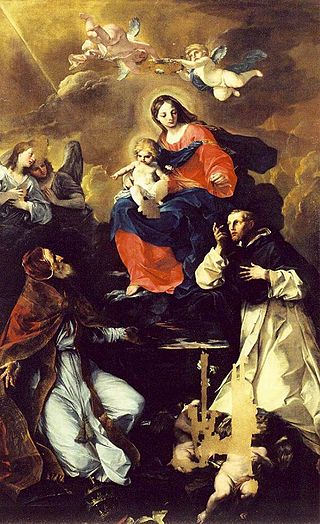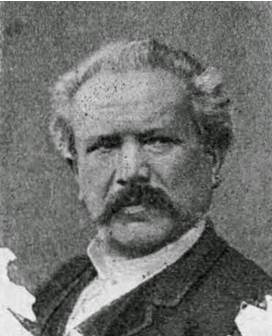
Sebastiano Conca was an Italian painter.

Corrado Giaquinto was an Italian Rococo painter.

Guglielmo Caccia called il Moncalvo was an Italian painter of sacred subjects in a Mannerist style.

Giuseppe Maria Crespi, nicknamed Lo Spagnuolo, was an Italian late Baroque painter of the Bolognese School. His eclectic output includes religious paintings and portraits, but he is now most famous for his genre paintings.

Felice Torelli was an Italian painter of the Baroque style, active mainly in Bologna.

Santi Prunati was an Italian painter of the Baroque era, born and mainly active in Verona.

Giacomo Parolini was an Italian painter of the Baroque period, mainly active in Ferrara.

Giacomo Boni was an Italian painter of the late-Baroque period, active mainly in Genoa.

Giuseppe Peroni was an Italian painter of the Baroque period.

Giuseppe Pedretti was an Italian painter of the late-Baroque or Rococo period, active mainly in Bologna.

Sebastiano Galeotti (1656–1746) was a peripatetic Italian painter of the late-Baroque period, active in Florence, Genoa, Parma, Piacenza, Codogno, Lodi, Cremona, Milan, Vicenza, Bergamo, and Turin.

Filippo Abbiati (1640–1715) was an Italian painter of the early-Baroque period, active in Lombardy and Turin, together with Andrea Lanzani and Stefano Maria Legnani, he was a prominent mannerist painters from the School of Lombardy. Born in Milan, he was a pupil of the painter Antonio Busca. Alessandro Magnasco was one of his pupils along with Pietro Maggi and Giuseppe Rivola. Ticozzi claims he trained, along with Federigo Bianchi, with Carlo Francesco Nuvolone. Along with Bianchi, he painted the cupola of Sant'Alessandro Martire in Milan. Abbiati also painted a St. John preaching in the Wilderness for a church in Saronno.

Tommaso Aldrovandini was an Italian painter of the Baroque period. He mainly painted perspective views and architectural subjects (quadratura), in which the figures were painted by Marcantonio Franceschini and Carlo Cignani. He decorated churches, palaces, and theaters in Forlì, Verona, Venice, Parma, Turin, Ferrara, and Genoa, and especially in his native Bologna. Among his pupils was Giovanni Benedetto Paolazzi.

Carlo Antonio Rambaldi (1680-1717) was an Italian painter of the Baroque period, active in his native Bologna.

Rodolfo Morgari was an Italian painter, primarily of genre and historical scenes.

Paolo Emilio Morgari was an Italian painter, primarily of religious subjects.

Giuseppe Camino (1818-1890) was an Italian painter, mainly of landscapes and vedute.

Stefano Orlandi was an Italian painter, active mainly in Bologna in the architectural perspective painting. He is known for painting fanciful architectural canvases, known as Capricci.

Agostino Cottolengo was an Italian painter.

Mariano Rossi was an Italian painter, persisting in what had become an anachronistic Rococo style amid an ascendant neoclassical environment. His placement legions of figures in a complex scenography and quadrature recalls the work of Pietro da Cortona.



















